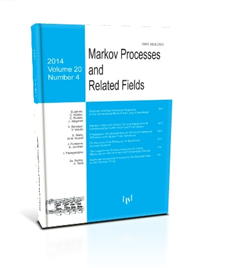On Spectral Analysis of Heavy-Tailed Kolmogorov-Pearson Diffusions
F. Avram, N.N. Leonenko, N. Suvak
2013, v.19, Issue 2, 249-298
ABSTRACT
The self-adjointness of the semigroup generator of one dimensional diffusions implies a spectral representation (see H.P. McKean, Elementary solutions for certain parabolic partial differential equations. Trans. Amer. Math. Soc., 1956, v. 82, N2, 519-548; I.S. Kac and M.G. Krein, On the spectral functions of the string. Amer. Math. Soc. Trans., 1974, v. 103, N2, 19-102) which has found many useful applications, for example for the prediction of second order stationary sequences (see H. Dym and H.P. McKean, Gaussian Processes, Function Theory and the Inverse Spectral Problem. Academic Press, 1976) and in mathematical finance (see V. Linetsky, Spectral methods in derivatives pricing. In: Handbooks in Operations Research and Management Science, 2007, v. 15, Elsevier, 223-299). However, on non-compact state spaces the spectrum of the generator will typically include both a discrete and a continuous part, with the latter starting at a spectral cutoff point related to the nonexistence of stationary moments. The significance of this fact for statistical estimation is not yet fully understood. We consider here the problem of spectral representation of transition density for an interesting class of examples: the hypergeometric diffusions with heavy-tailed Pearson type invariant distribution of a) reciprocal (inverse) gamma, b) Fisher - Snedecor, or c) skew-Student type. As opposed to the "classic" hypergeometric diffusions (Ornstein-Uhlebeck, Gamma/CIR, Beta/Jacobi), these diffusions have a continuum spectrum, whose spectral cutoff and transition density we present in this paper.
Keywords: diffusion process,infinitesimal generator,Kolmogorov-Pearson diffusion,Cramer-Lundberg equation,transition density
COMMENTS
Please log in or register to leave a comment

